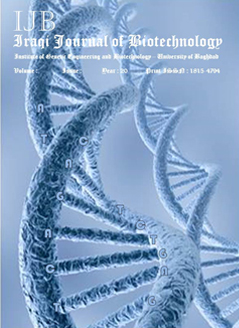Isolation and Identification of Multidrug Resistance Among Clinical and Environmental Pseudomonas aeruginosa Isolates
Abstract
Pseudomonas aeruginosa is the most common opportunistic pathogen causing morbidity and mortality in hospitalized patients due to its multiple resistance mechanisms. Therefore, as a therapeutic option becomes restricted, the search for a new agent is a preference. So P. aeruginosa is an extremely versatile Gram-negative bacterium capable of thriving in a broad spectrum of environments, and this performs main problems to workers in the field of health. One hundred and fifty samples were collected from different sources from Baghdad hospitals, divided into two main groups: clinical (100) specimens and (50) samples as an environmental, collected from October 2019 to the March 2020. All of these samples were cultured by specific and differential media, Forty six isolates of P. aeruginosa bacteria were identified by using microscopic examination, biochemical tests and confirmed by VITEK-2 compact system. The antibiotic sensitivity test recognized for all bacterial isolates and the results showed high resistant to Amikacin, Cefepime, Ciprofloxacin, Gentamicin, Meropenem, Piperacilin, Ticarcillin, Ticarcillin/Clavulanic Acid and Tobramycin, and high sensitive to Ceftazidime, Colistin and Imipenem. Biofilm formation were detection by using Microtiter plate method, were results includes out of 23 isolates, three (13%) were formed as weak biofilm, seven (30.4 %) were developed as moderate biofilm, whereas eleven (47.8%) were constituted as strong biofilm, while only two (8.6%) was unable to form biofilm.


